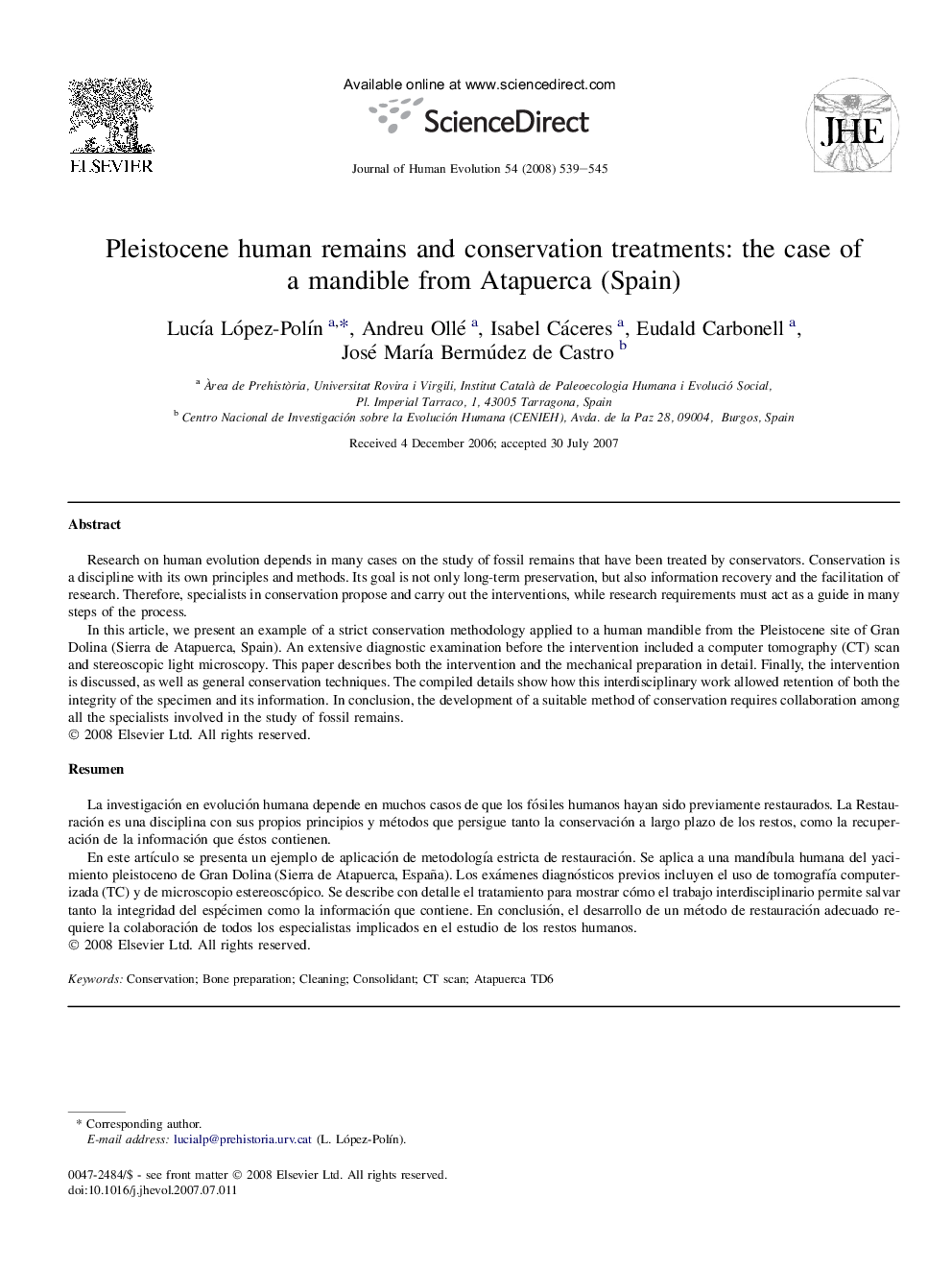| کد مقاله | کد نشریه | سال انتشار | مقاله انگلیسی | نسخه تمام متن |
|---|---|---|---|---|
| 4557173 | 1329532 | 2008 | 7 صفحه PDF | دانلود رایگان |

Research on human evolution depends in many cases on the study of fossil remains that have been treated by conservators. Conservation is a discipline with its own principles and methods. Its goal is not only long-term preservation, but also information recovery and the facilitation of research. Therefore, specialists in conservation propose and carry out the interventions, while research requirements must act as a guide in many steps of the process.In this article, we present an example of a strict conservation methodology applied to a human mandible from the Pleistocene site of Gran Dolina (Sierra de Atapuerca, Spain). An extensive diagnostic examination before the intervention included a computer tomography (CT) scan and stereoscopic light microscopy. This paper describes both the intervention and the mechanical preparation in detail. Finally, the intervention is discussed, as well as general conservation techniques. The compiled details show how this interdisciplinary work allowed retention of both the integrity of the specimen and its information. In conclusion, the development of a suitable method of conservation requires collaboration among all the specialists involved in the study of fossil remains.
ResumenLa investigación en evolución humana depende en muchos casos de que los fósiles humanos hayan sido previamente restaurados. La Restauración es una disciplina con sus propios principios y métodos que persigue tanto la conservación a largo plazo de los restos, como la recuperación de la información que éstos contienen.En este artículo se presenta un ejemplo de aplicación de metodología estricta de restauración. Se aplica a una mandíbula humana del yacimiento pleistoceno de Gran Dolina (Sierra de Atapuerca, España). Los exámenes diagnósticos previos incluyen el uso de tomografía computerizada (TC) y de microscopio estereoscópico. Se describe con detalle el tratamiento para mostrar cómo el trabajo interdisciplinario permite salvar tanto la integridad del espécimen como la información que contiene. En conclusión, el desarrollo de un método de restauración adecuado requiere la colaboración de todos los especialistas implicados en el estudio de los restos humanos.
Journal: Journal of Human Evolution - Volume 54, Issue 5, May 2008, Pages 539–545